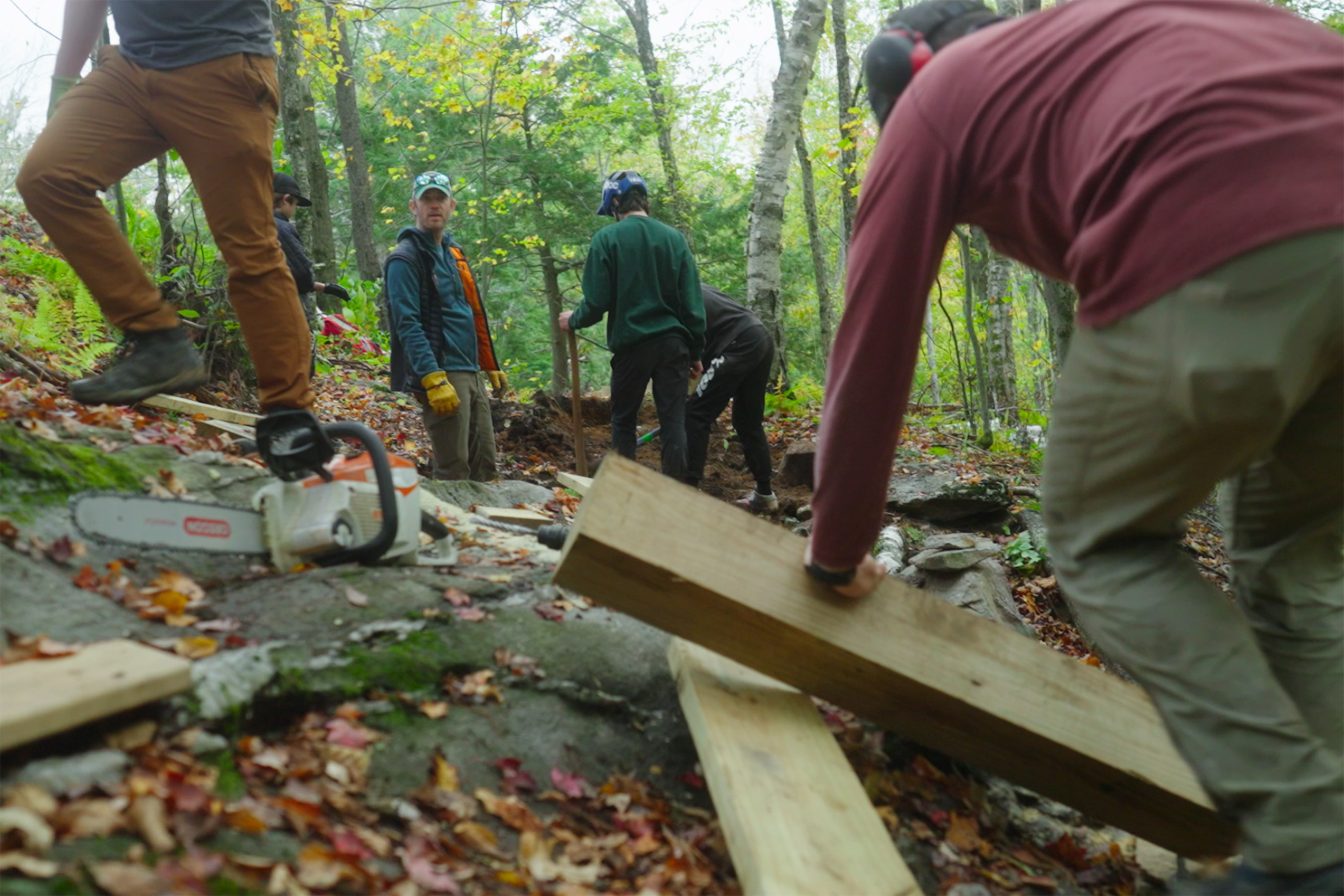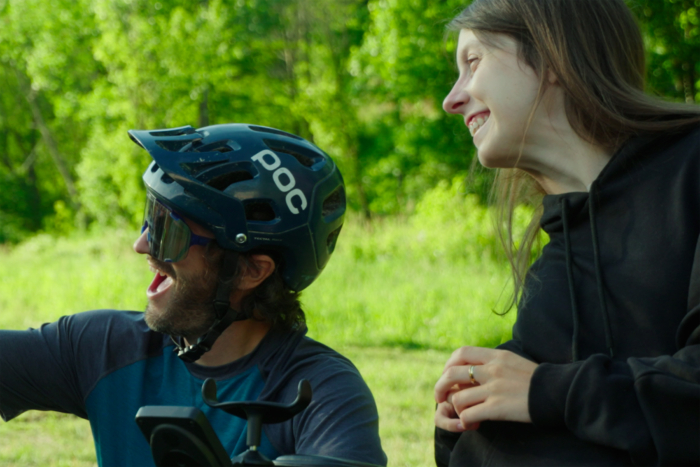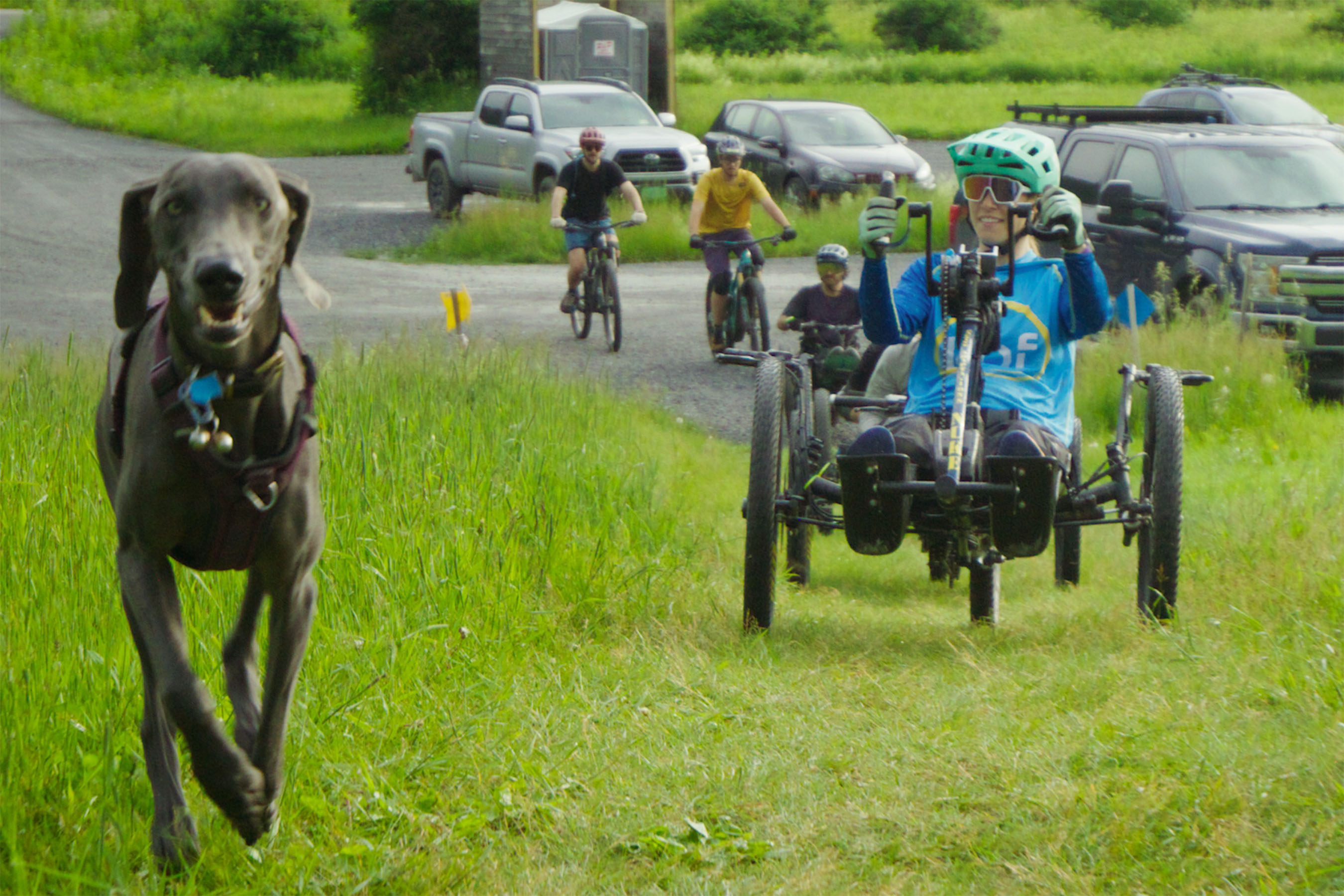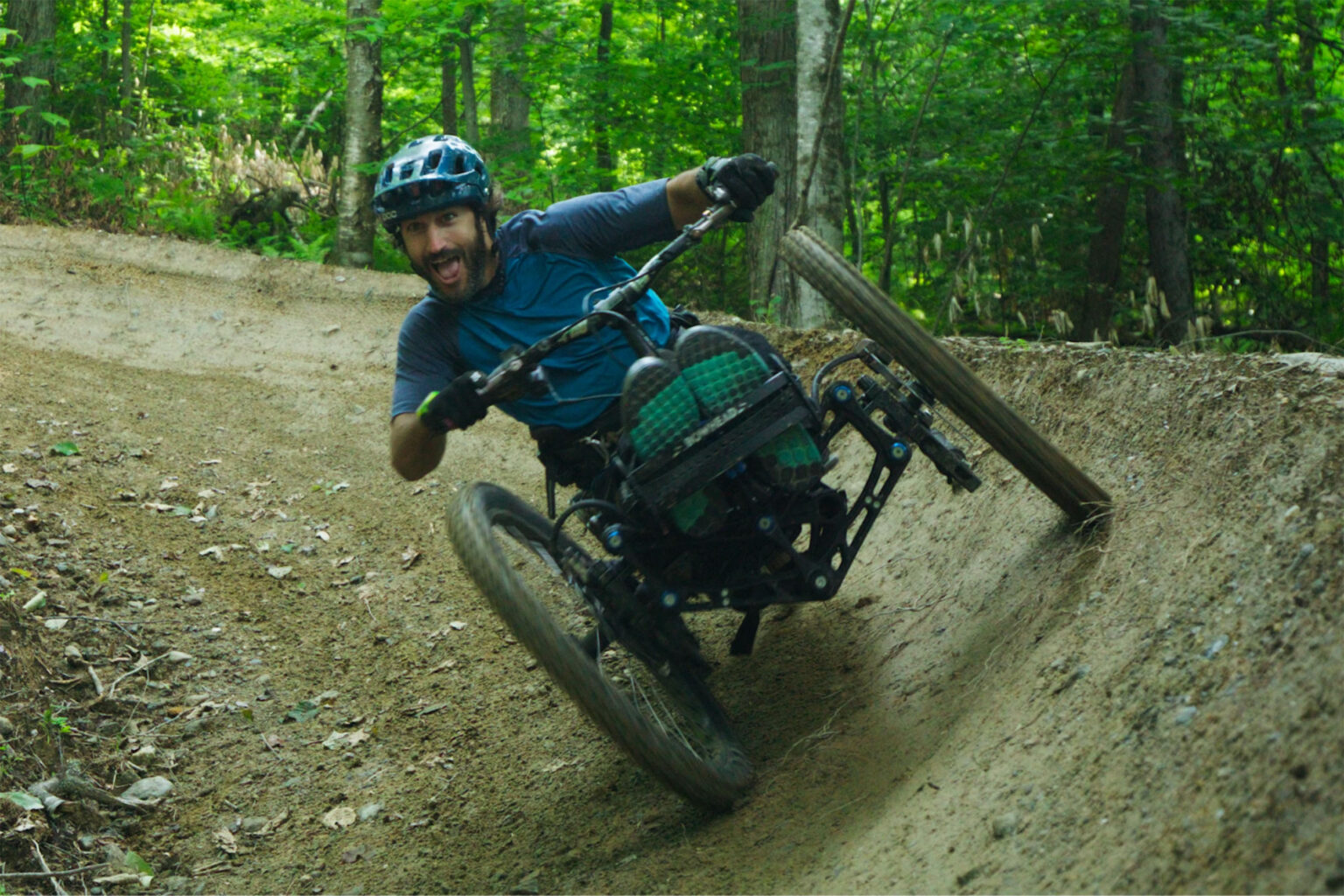A few years ago, Berne Brody and Greg Durso met up with some friends to go mountain biking in Vermont. They were approximately 30 seconds into the ride when it came to a grinding halt. Durso’s adaptive bike couldn’t fit through a narrow gap between two trees.
After they cleared that obstacle, they soon had to stop again since the trail’s bridges were 6 inches too narrow for Durso to ride on. Every couple of minutes, the crew stopped, picked up Durso on his bike, and carried him across another obstacle, and the ride would resume again.
For Brody, Board President of local nonprofit Richmond Mountain Trails (RMT), it was an eye-opening experience — and a motivating one. The RMT, along with help from other nonprofits, soon embarked on a radical idea: Build the first fully adaptive mountain bike trail network in America.
Their efforts, highlighted in the new documentary Best Day Ever, challenge society’s preconceived notions about disability and serve as a blueprint for making the outdoors accessible for all.
The Driving Range: Adaptive Mountain Biking Comes to Vermont
Best Day Ever tells the story of Greg Durso and Allie Bianchi, two adaptive athletes, the RMT, and the Vermont biking community coming together to build The Driving Range (TDR). This unique 8-mile trail network is fully adaptive-friendly. Every Wednesday night for 3 years, over 200 volunteers came out to build trails, logging over 5,000 hours of work. Durso and other adaptive bikers would test the trails as they were built.
Anyone can ride these trails, which range in difficulty from blue to double black diamond. “We wanted to create a place that just really removed that one level of separation, right? What you ride there is based on what your skill level is, not what bike you’re riding,” Brody said in an interview with GearJunkie.
“I really love to ride my bike. Like biking just gives me so much happiness and peace, and it’s very much a life source for me. So it just made me think, okay, how can we create a place where Greg and other people who have a disability can go out and just have a good time on their bikes and not have to worry about if they can get through the trail or not get through the trail?”
This was no small task. There was no blueprint for how to achieve a project of this scope. While other adaptive trails existed in the U.S., there was no entire adaptive network.
“We had no idea what we were doing, and there was no handbook that existed for how to do this,” Brody said.
The team worked with the Vermont Mountain Biking Association and the Kelly Brush Foundation, a nonprofit that supports adaptive athletes to take on the challenge.
The Impact
Since TDR opened in 2023, it’s been a massive success. Durso sometimes drives by and sees the parking lot full of cars. They’ve had adaptive bikers come from as far away as California to ride there.

For Durso, TDR represents an opportunity to bring adaptive riders together. “I got to create a group text. I’ve always wanted a group text for adaptive riders that I can text and be like, ‘Let’s go someplace together,’” Durso said.
Before TDR, that was a logistical nightmare. People with different mobility needs have different kinds of bikes. And not all of them might fit on the same trail. They also might need a certain number of able-bodied people to help with bridge crossings. With TDR, though, it became possible.
“It’s like that mental math no longer exists,” Durso said. “I can make a text, and I go, ‘Hey, we’re gonna go here.’ And everyone’s like, ‘yay.’ It’s such a small win, but it’s the biggest win.”

The Film
Brody is a journalist and a storyteller. She felt the urge to make a documentary after witnessing young mountain bikers interact with Durso at trail-building nights.
“[Initially] the kids wouldn’t really interact with the adaptive riders. They just didn’t have context,” Brody said. “Within one or two trail nights, that dynamic totally shifted. Like those kids were the ones who were like, ‘When’s Greg gonna be here?’”
“It just shifted how these kids are going to move through the world and how they’re going to interact with people along the way. And to me, that made it like, it’s cool we have these trails in Vermont, but we need to really tell this story more broadly.”
Disability & Media
In a world of “inspiration porn,” the media objectifies people with disabilities and treats them with pity. Brody, Durso, Bianchi, and the film’s co-director, Ben Knight, were very conscious of how the documentary depicted disability.
“[We were trying] to tell that piece where it’s not just Allie and me in some sort of ‘inspiration porn’ type of thing, but more just, like, what does community mean to us? And how is it a little bit different? And how can we create a space that is inclusive to everybody? That’s what we’re able to do, and just try to normalize outdoor recreation,” Durso said.
“I just want to grab my bike and ride on the trails with the people I want to ride them with,” he said.

“I think you can look at someone in a wheelchair and assume what their life is like, or what it must be like — your life must be a little bit harder, because you have to do everything in a chair,” Bianchi said.
“But there are so, so many other things that go into it. And so I think the really neat thing is that this film was an opportunity for us to show a glimpse into that. There is more that goes into life, and it can be great things.”
A Model for the Outdoor Industry
The team hopes that Best Day Ever will inspire other outdoor spaces and organizations to take a deeper look into how they can be more inclusive. The film team has released a three-part series on building adaptive trails on YouTube that they want to serve as a toolkit.
In collaboration with Vermont Adaptive, Durso frequently visits mountain biking trails. He helps their organizers understand changes they can make.
“You’d be surprised, like, here’s 10 miles of trail, and there’s six inches of the trail that doesn’t work right. If you just fix this, boom, then you get 10 miles of trail,” he said. “It’s little stuff like that.”

While she doesn’t diminish the huge amount of effort that building TDR took, Brody also emphasized that it’s not rocket science.
“We’re really psyched to be able to share what we’ve learned there, because it turns out there’s plenty of [existing] trails out there that could likely be retrofitted to be adaptive without a terribly heavy lift,” she said.
“It’s just important for people to realize that down on the trails, we can create a community aspect of this that’s so inclusive, and it’s so fun,” Durso said. “And we did all that, and I’m so thankful for it.”
To watch the film, visit this website. Learn more about the Kelly Brush Foundation here and Vermont Adaptive Ski & Sports here.
Read the full article here





